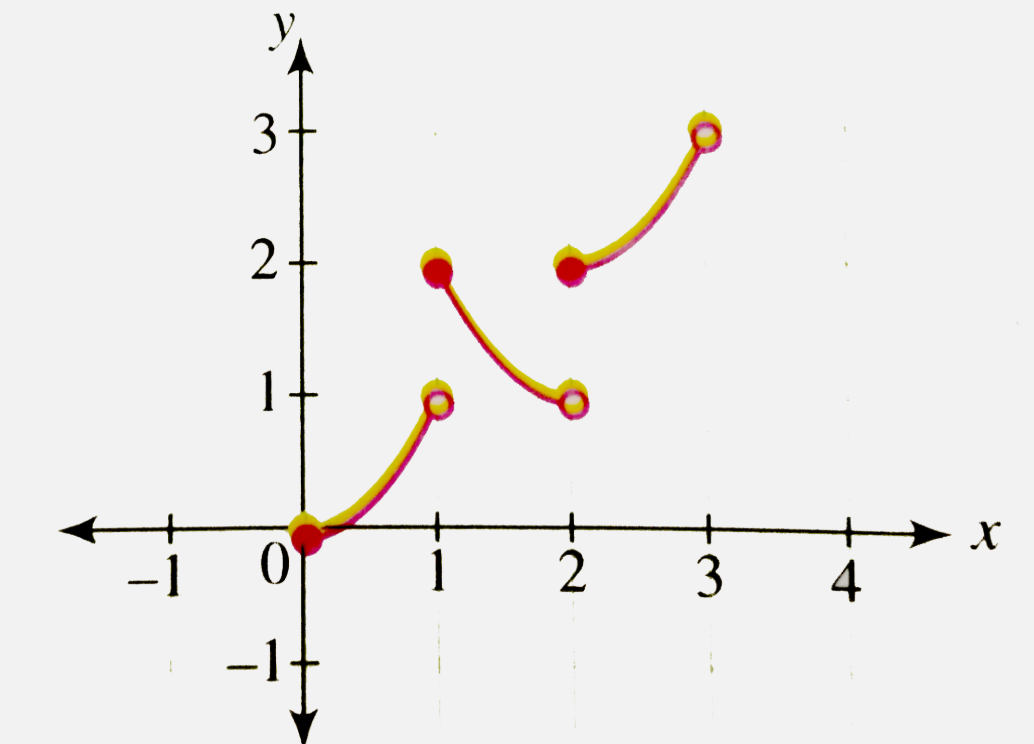For non-negative integers m and n a function is defined as follows f(m,n) = {n+1 if m=0; f(m-1,1) if m!=0, n=0} Then the value of f(1,1) isSolution in Tamil
1
2
3
4
The correct Answer is:C
f(1,1)=f(0,f(1,0))=f(0,f(0,1))=f(0,2)=3
Topper's Solved these Questions
- FUNCTIONSBOOK - CENGAGECHAPTER - FUNCTIONSEXERCISE - Multiple Correct Answers Type
10 Videos
- FUNCTIONSBOOK - CENGAGECHAPTER - FUNCTIONSEXERCISE - Comprehension Type
7 Videos
- EQUATION OF PLANE AND ITS APPLICATIONS -IIBOOK - CENGAGECHAPTER - EQUATION OF PLANE AND ITS APPLICATIONS -IIEXERCISE - DPP 3.4
18 Videos
- GETTING STARTED WITH GRAPHSBOOK - CENGAGECHAPTER - GETTING STARTED WITH GRAPHSEXERCISE - Exercise
18 Videos
Similar Questions
The function f(x)=cos−1⎛⎝2[|sinx|+|cosx|]sin2x+2sinx+114⎞⎠ is defined if x belongs to (where [.] represents the greatest integer function)
View SolutionLet f(x)=x2−2x−1∀x∈R Let f:(−∞,a]→[b,∞), where a is the largest real number for which f(x) is bijective. If f:R→R , g(x)=f(x)+3x−1 , then the least value of function y=g(|x|) is
View SolutionLet A(0,6,6), B(6,6,0) and C(6,0,6) are three points and point D is moving on the line x+z−3=0=y. If G is centroid of ΔABC, then minimum value of GD is
View SolutionDoes the following graph pass the vertical or horizontal line test ?

View SolutionFor non-negative integers m and n a function is defined as follows f(m,n)={n+1 if m=0;f(m-1,1) if m!=0,n=0} 'Then the value of f(1,1) is
View SolutionFor non-negative integers mandn a function is defined as follows: f(m,n)={n+1ifm=0f(m−1,1)ifm≠0,n=0f(m−1,f(m,n−1))ifm≠0,n≠0 Then the value of f(1,1) is a. 1 b. 12 c. 3 d. 4
View SolutionFor non-negative integers m and n a function is defined as follows: f(m,n)={n+1, if m=0 and f(m-1,1) if m!=0,n=0 and f(m-1,f(m,n-1)) if m!=0,n Then the value of f(1,1) is:
View SolutionIf a_(0)=x,a_(n+1)=f(a_(n)), where n=0,1,2,..., then answer thefollowing questions.If f(x)=m sqrt(a-x^(m)),x<0,m<=2,m in N ,then
View SolutionA function f(x) is defined as f(x)=[x^(m)(sin1)/(x),x!=0,m in N and 0, if x=0 The least value of m for which f'(x) is continuous at x=0 is
View SolutionIf (5+2sqrt(6))^(n)=m+f, where n and m are positive integers and 0<=f<=1, then (1)/(1-f)-f is equal to
View SolutionLet m,n be two positive real numbers and define f(n)=∫∞0xn−1e−xdx and g(m,n)=∫10xm−1(1−m)n−1dx.
It is known that f(n) for n gt 0 is finite and g(m, n) = g(n, m) for m, n gt 0.
∫∞0xm−1(1+x)m+ndx=
View SolutionLet m,n be two positive real numbers and define f(n)=∫∞0xn−1e−xdx and g(m,n)=∫10xm−1(1−m)n−1dx.
It is known that f(n) for n gt 0 is finite and g(m, n) = g(n, m) for m, n gt 0.
∫10xm(loge.1x)dx=
View SolutionIf m and n are positive integers and f(m,n)=∫10xn−1(logx)mdx, then f(m,n) is equal to
View Solutionf : N→N என்ற சார்பு f(m) = m² + m + 3 என வரையறுக்கப்பட்டால், அது ஒன்றுக்கு ஒன்றான சார்பு எனக் காட்டுக.
View SolutionFor non-negative integers mandn a function is defined as follows: f(m,n)={n+1ifm=0f(m−1,1)ifm≠0,n=0
f(m−1,f(m,n−1))ifm≠0,n≠0 Then the value of f(1,1) is a. 1 b. 12 c. 3 d. 4
View SolutionFor non-negative integers m and n a function is defined as follows: f(m,n)={n+1,ifm=0andf(m−1,1)ifm≠0,n=0andf(m−1,f(m,n−1))ifm≠0,n≠0}Then the value of f(1,1) is:
View Solution
